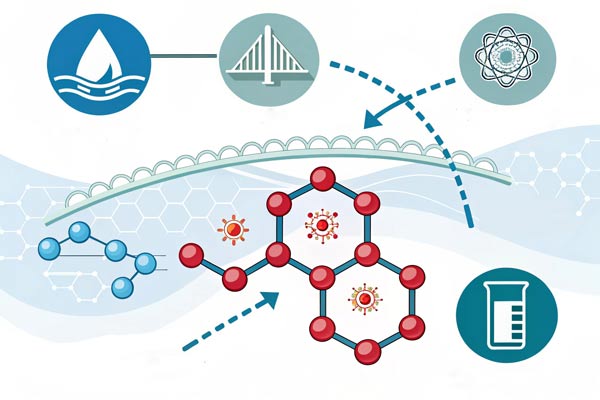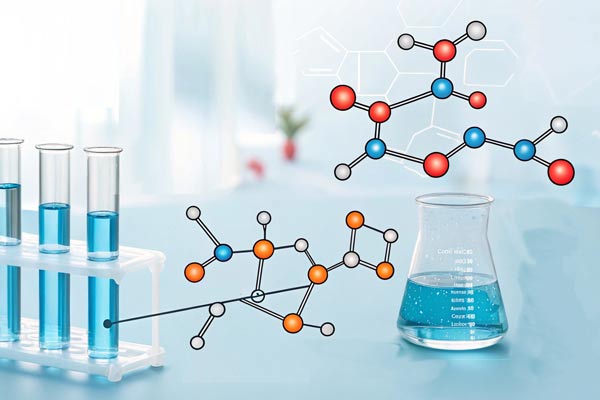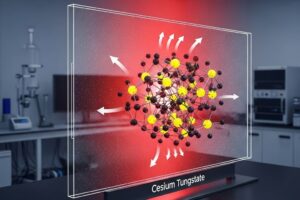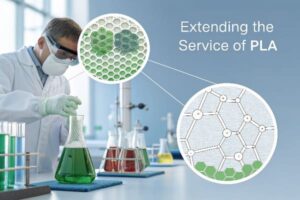Are you looking to enhance the performance and durability of your water-based adhesives? Do you want to ensure they stand up to tougher conditions? A crosslinking agent1 might be exactly what you need.
A crosslinking agent in water-based adhesives is a chemical additive that creates strong, permanent bonds between polymer chains. This process significantly improves the adhesive's strength, water resistance, heat resistance, and overall durability, making it suitable for more demanding applications.

I remember when the industry started shifting towards water-based adhesives. Everyone was excited about the environmental benefits. However, there was a challenge: water-based adhesives often lacked the robust performance of their solvent-based counterparts. This is where crosslinking agents became indispensable. They allowed us to achieve high performance while maintaining environmental responsibility. At Langyi, we embraced this challenge, focusing on developing solutions that met both performance and sustainability needs.
What is Cross-linking Adhesive?
Are you wondering what makes a cross-linking adhesive2 different from a regular one? You might think it is just a stronger glue. It is much more than that.
A cross-linking adhesive is an adhesive system that forms a three-dimensional network structure after curing. This is created by chemical reactions between the adhesive's polymer chains and a crosslinking agent. This network provides superior performance compared to adhesives that only dry or cool to form bonds.

When I explain cross-linking to customers, I often use the analogy of spaghetti. Imagine a bowl of cooked spaghetti, where the strands are just tangled together. That is like a standard adhesive drying. It holds, but the strands can still slip. Now imagine the spaghetti strands are chemically bonded together at various points, forming a rigid mesh. That is a cross-linked adhesive. The crosslinking agent1 helps to create these "bridges" or bonds between individual polymer chains. This transforms the adhesive from a linear or branched structure into a highly organized, robust 3D network. This chemical transformation is key. It fundamentally changes the physical properties of the adhesive. Without crosslinking agents, water-based adhesives, while environmentally friendly, might not offer the same level of resistance to water, heat, or chemicals as solvent-based ones. The cross-linking process enhances this. It makes the adhesive much more durable and reliable in diverse applications. For example, in automotive interiors or high-wear textiles, achieving sufficient bond strength and durability without solvent emissions relies heavily on effective crosslinking.
| Adhesive Type | Bonding Mechanism | Strength | Water Resistance | Heat Resistance |
|---|---|---|---|---|
| Non-Crosslinked | Physical entanglement, solvent evaporation/water removal | Moderate | Low to Moderate | Low |
| Crosslinked | Chemical bond formation, 3D network | High | High | High |
What are Cross-linking Agents Examples?
Are you curious about the different types of chemicals used as cross-linking agents? You might think they are all the same. There is a variety of options.
There are several types of cross-linking agents commonly used in water-based adhesives, each with specific reaction mechanisms and properties. Common examples include carbodiimides3, isocyanates4, aziridines, and epoxy resins. The choice depends on the adhesive's chemistry, desired performance, and safety requirements.
Over the years, working at Langyi, I have seen the evolution of crosslinking agents. Early on, some common choices were quite effective. However, with increasing awareness of environmental protection and health, there has been a significant push for safer and healthier options. For instance, isocyanates are very reactive. They provide excellent performance. However, they can pose health risks. This has led to demand for alternatives. This is where carbodiimide crosslinking agents shine. They react efficiently with acidic groups like carboxyl groups, which are common in many acrylic and polyurethane dispersions used in water-based adhesives. They form very stable urea derivatives. This creates strong, durable bonds. Moreover, carbodiimides, especially water-dispersible types, offer excellent performance in water resistance, heat resistance, and chemical resistance. They do not release harmful VOCs (Volatile Organic Compounds) during curing. This makes them a much safer choice for workers and end-users. We have seen a growing adoption of carbodiimide crosslinkers in areas like automotive leather coating, textile lamination, packaging, and printing inks. Their combination of good performance, health, and safety makes them increasingly preferred in the market.
| Cross-linking Agent Type | Common Applications | Advantages | Disadvantages |
|---|---|---|---|
| Carbodiimide | Leather coatings, textiles, packaging, printing inks | Excellent water resistance, low toxicity, no VOCs | Can be more expensive |
| Isocyanate (blocked) | Wood adhesives, construction | High performance, very strong bonds | Health concerns if unreacted, moisture sensitive |
| Aziridine | Pressure-sensitive adhesives, general purpose | Fast curing, good adhesion to various substrates | Toxicity concerns with some types |
| Epoxy Resin | Structural adhesives, coatings | High strength, chemical resistance | Longer curing times, often part of a two-part system |
What makes Adhesive Cure Faster or Slower?
Are you curious about what factors influence how quickly or slowly an adhesive cures? You might think it is just the adhesive itself. Many variables are at play.
The cure speed of an adhesive is influenced by several factors, including the type and concentration of the crosslinking agent, temperature, humidity, the pH of the adhesive, and the presence of catalysts or inhibitors. Understanding these factors is key to optimizing the adhesive's performance in different applications.
In my role, one of the most common questions from customers is how to control cure speed. Everyone wants a balance. Sometimes you need a fast cure for high-speed production lines. Other times, you need a slower cure for assembly processes that require repositioning. The crosslinking agent plays a major role. For example, higher concentrations of a reactive crosslinking agent will generally lead to a faster cure. However, too much can also lead to brittleness or reduce pot life. Temperature is another critical factor. As a general rule, chemical reactions speed up with higher temperatures. So, increasing the curing temperature can significantly accelerate the crosslinking process. We sometimes advise customers on optimal curing ovens or heat lamps. Conversely, lower temperatures will slow down the cure. Humidity can also impact cure kinetics, especially for crosslinkers that react with water. The pH of the adhesive formulation is also important, as many crosslinking reactions are pH-dependent. For instance, carbodiimide crosslinkers typically prefer a slightly acidic to neutral pH range for optimal reactivity. Adjusting the pH can thus fine-tune cure speed. Finally, specific catalysts can be added to accelerate the reaction. Inhibitors can slow it down if needed. Properly managing these variables allows for precise control over the adhesive's behavior. This ensures it meets the specific demands of each manufacturing process.
| Factor | Influence on Cure Speed | Explanation |
|---|---|---|
| Crosslinking Agent Type | Varies greatly | Different chemistries have inherent reactivities (e.g., aziridines often faster than epoxies) |
| Concentration | Higher -> Faster | More reactive sites mean more frequent bond formation |
| Temperature | Higher -> Faster | Increased molecular energy and collision frequency accelerate reactions |
| Humidity | Variable | Some crosslinkers react with water, others are inhibited by it; depends on specific chemistry |
| pH Level | Variable | Many crosslinking reactions are pH-dependent; moving towards optimal pH can increase speed |
| Catalysts/Inhibitors | Presence -> Faster/Slower | Specific chemicals can lower activation energy or block reaction pathways |
Conclusion
Crosslinking agents are crucial for boosting water-based adhesive performance. They enhance strength and durability. This makes them ideal for demanding uses.
Understanding crosslinking agents is essential for improving adhesive performance and durability. ↩
Explore the unique properties of cross-linking adhesives and their applications. ↩
Discover the benefits and applications of carbodiimide crosslinking agents. ↩
Understand the health risks of isocyanates and safer alternatives available. ↩






